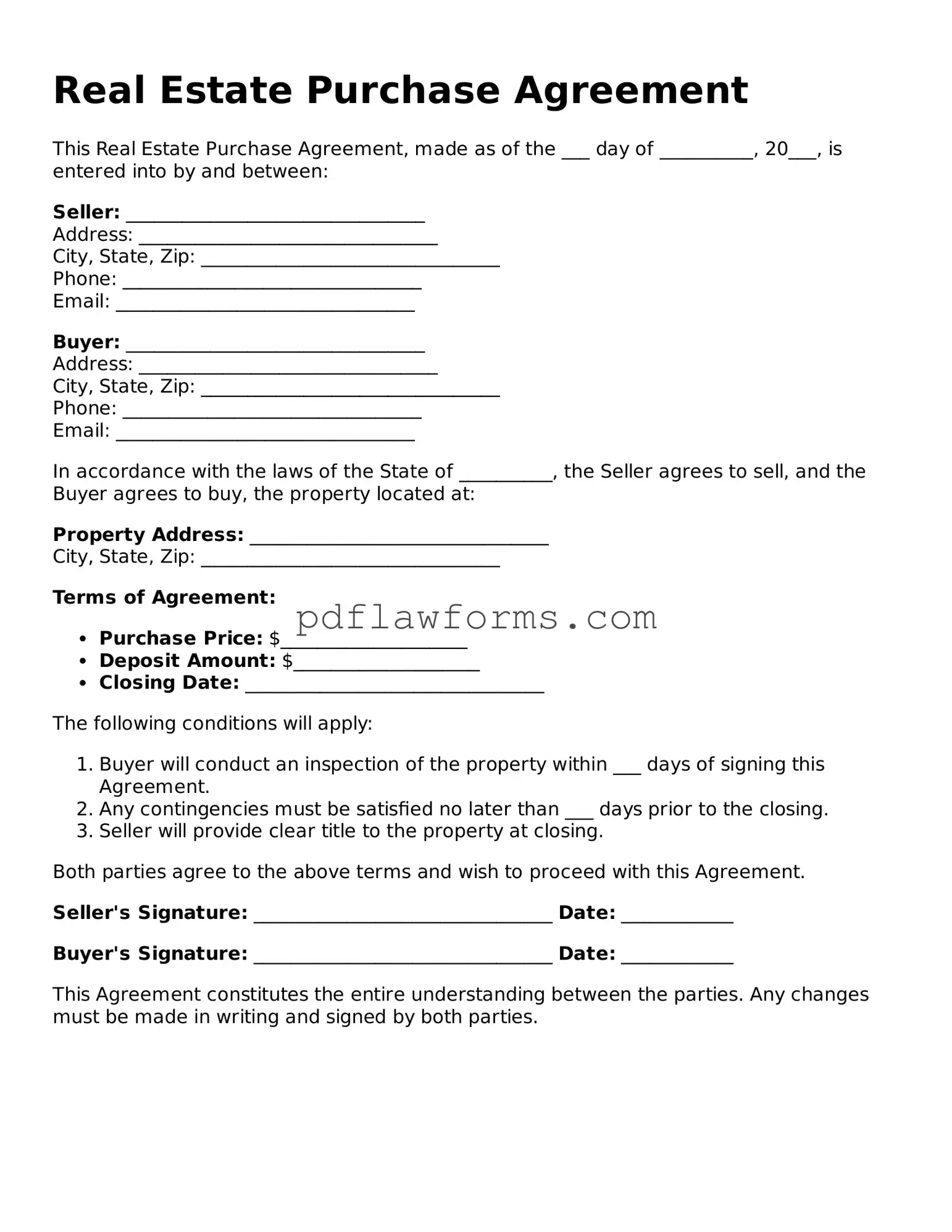When filling out a Real Estate Purchase Agreement, it’s easy to overlook important details. One common mistake is failing to include the correct legal names of all parties involved. Using nicknames or abbreviations can lead to confusion and potential legal issues down the road. Always ensure that the names match those on official identification documents.
Another frequent error is neglecting to specify the purchase price clearly. This may seem straightforward, but vague language can lead to misunderstandings. It’s crucial to state the exact amount being offered, as well as any contingencies that may affect the final price.
People often forget to include important dates. Missing deadlines for inspections, financing, or closing can jeopardize the entire transaction. Make sure to outline all critical dates clearly, so everyone is on the same page and can plan accordingly.
Inadequate descriptions of the property can also cause significant issues. It's essential to provide a detailed description, including the address, lot number, and any relevant features. A vague description can lead to disputes about what is actually being sold.
Many individuals overlook the importance of contingencies. These are conditions that must be met for the agreement to be binding. Common contingencies include financing approval and home inspections. Without these provisions, buyers may find themselves in a difficult situation if something goes wrong.
Another mistake is failing to review the terms of the agreement thoroughly. Rushing through the document can lead to missing critical clauses or obligations. Take the time to read every section and ensure you understand your rights and responsibilities.
People sometimes skip signing the agreement altogether. This may sound basic, but it’s an easy oversight, especially in a digital age where electronic signatures are common. Ensure that all parties sign and date the agreement to make it legally binding.
Lastly, one of the most significant errors is not consulting with a real estate professional or attorney. The nuances of real estate transactions can be complex, and having expert guidance can help avoid costly mistakes. Seeking advice ensures that the agreement is not only filled out correctly but also protects your interests.
